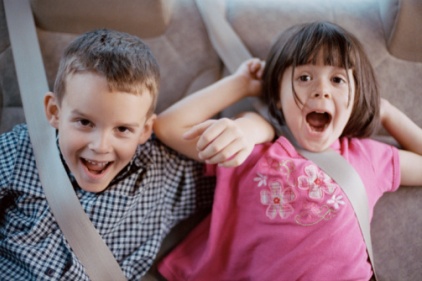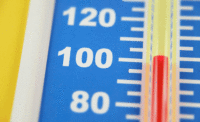Kids in cars: Seat belts and car seats make a difference
Traffic cashes a leading cause of death for U.S. children

 More than a third of children under age 13 who died in passenger vehicle crashes in 2011 were not in car seats or wearing seat belts, according to statistics released recently by the Department of Transportation's National Highway Traffic Safety Administration (NHTSA).
More than a third of children under age 13 who died in passenger vehicle crashes in 2011 were not in car seats or wearing seat belts, according to statistics released recently by the Department of Transportation's National Highway Traffic Safety Administration (NHTSA).
Motor vehicle crashes remain a leading cause of death for children. In 2011, almost two children under the age of 13 were killed and 338 were injured every day while riding in cars, SUVs, pickups and vans.
SUvs the worst
Of the children killed, the percentage of unrestrained fatalities, with no car seat or seat belt, varied by vehicle type, with greater percentages of unrestrained fatalities occurring in larger vehicles: SUVs (55 percent), pick-ups (43 percent), vans (40 percent), and cars (24 percent).
To help prevent prevent the deaths of children in traffic crashes, the NHTSA is highlighting the important safety benefits associated with the proper use of car seats, booster seats, and seat belts.
"Regardless of the size of the vehicle, the age of the child or the length of the trip, children should always be properly restrained in a car seat, booster or seat belt," said NHTSA Administrator David Strickland. "Car seats, when correctly installed and used, provide proven life-saving and injury-reducing benefits for child passengers."
10,000 lives saved
From 1975 through 2011, NHTSA estimates that approximately 10,000 lives were saved by child restraints for children under the age of 5 in passenger vehicles, with more than 260 lives saved in 2011 alone.
NHTSA offers parents and caregivers the following safety tips:
- Determine if your child is in the right seat for his or her age and size;
- Read the instructions and labels that come with your child's car seat and read the vehicle owner's manual for important information on installing the seat in your particular vehicle;
- Go to your local car seat inspection station to have your seat checked by a Certified Child Passenger Safety Technician;
- Use the Lower Anchors and Tethers for Children (LATCH) restraint system or seat belt to install your car seat and use the top tether to secure forward-facing car seats;
- Register your car seat and booster seat at SaferCar.gov so you will be informed if there is a safety recall on your model; and
- Always wear your seat belt to set a good example. Unbuckled drivers are more likely to have unrestrained children in the car.
Parents and caregivers can visit SaferCar.gov/TheRightSeat to determine if a child is in the right seat for his or her age and size and to locate a car seat check event in your area.
Additional information on child passenger safety can be found in NHTSA's latest issue of SAFETY 1N NUM3ERS, an online monthly newsletter on hot topics in auto safety.
Looking for a reprint of this article?
From high-res PDFs to custom plaques, order your copy today!






